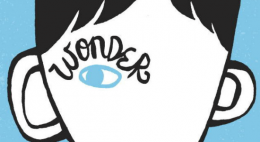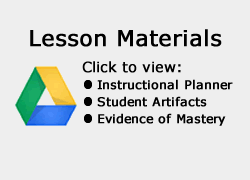This lesson is for : Grade 8:
Summary
Wonder’s narrators, Auggie, Via, Summer, Justin, Jack, and Miranda, each told a very different version of the novel’s plot. Auggie’s chapters felt very matter-of-fact, while Via bordered on outrage. Summer was self-assured; Jack was torn. Miranda and Justin felt like minor characters until we learned the impact that Auggie and his family made on their lives. Suddenly, their voices cried out valuable details.
For this project, the students assumed the role of a filmmakers. They chose the point of view from which they filmed, but were required to align that perspective with the tone of that particular storyteller. They determined an angle, completed research to capture still and/or moving images, composed a script that reflected the chosen point of view, chose a musical score, and created a trailer for a Wonder movie using Moviemaker or other approved programs. There were specific deadlines for the steps of the research, the script, the music, and the images. Ultimately, students created a trailer for Wonder using the digital tool of their choice.
All materials for this lesson can be viewed here: Website Resource
TIPC Ratings
Research & Information Fluency
Rating: Approaching- Explanation: After a 45-minute research and citation lesson from our school librarian, students were charged with selecting the images and musical score for their movie trailers. They had to consider several criteria:
- the nature of the website from which the images were selected (with special attention paid to the domain ( i.e., .com versus .edu)
- the point of view from which their trailers were to be focused
- balance between moving and/or still photos
- MLA citation of each image and song
The teacher supported students throughout this endeavour as they aqcuired, evaluated, and applied the information to the assigned task.
Communication & Collaboration
Rating: Ideal – Explanation: Students were given the opportunity to work in self-selected groups or on their own. Using Google Drive, students collaborated purposefully without direct supervision. Even students who opted to work independently were able to “bounce ideas around” with a partner using the Share feature on Google docs. This collaboration established meaningful communication, and the feedback provided served as a valuable tool for establishing the tone of the movie trailers, narrowing image and musical selections, and revising to create authentic final products.
On Movie Trailer Premier Day, students from all three grade levels and teachers throughout the building gathered in the school auditorium to watch all of the movie trailers. At the conclusion of each movie trailer, every audience member completed a Google Form to provide real-time feedback for the students.
All of the information is shared publicly via. a Google site. The site houses the directions, rubric, student feedback, teacher modeled example, as well as two exemplar student artifacts. Our Schools Vimeo account was used to share each of the trailers with a global audience.
Critical Thinking & Problem Solving
Rating: Developing – Explanation: Students chose one narrator from R.J. Palacio’s Wonder, determined how to best portray that character’s point of view in film, and created an advertisement for the movie adaptation of the novel. The movie trailer addressed certain essential questions:
- How does a narrator’s tone contribute to the mood of a piece?
- How can the tone of the book’s chapter be recreated in the advertisement for the book’s movie?
- What elements from the book (i.e., plot, character, problem or conflict) is most important to convey to potential readers/viewers?
- What are the qualities of an effective advertisement like a movie trailer?
Students were permitted to choose from a wide variety of digital tools, including Windows Movie Maker, Audacity, and Photoshop. Many students opted to use digital tools that were not available on their HCPS laptop, including apps provided by other platforms, such as Apple. Via the Google Drive, many students were able to ask questions of their peer partners, while others posed problem-solving strategies to the teacher and the school’s ITRT.
Creativity & Innovation
Rating: Ideal – Explanation: Students were tasked with creating a multi-media movie trailer for an up-and-coming movie based on the novel Wonder by R.J. Palacio. In order to do this successfully, students had to analyze and synthesize what they had read. But they also had to create a brand-new product, complete with appropriate images, background music, and voice-over. And finally, they had to convince their audience that their movies were worth watching.
The students were engaged throughout this entire project. Many took creative risks, choosing from a wide variety technology tools such as Adobe Premier, Windows MovieMaker, Audacity, and Photoshop, in order to produce an innovative movie trailer. Some students asked their family members to participate, while others created original animations. Most produced projects that far surpassed the assignment parameters.
On Movie Trailer Premier Day, students participated in a school-wide screening of their projects. Principals, teachers, and students of various grade levels attended. A parent volunteer even served popcorn! The excitement was palpable as the student viewed the trailers and provided peer feedback and constructive criticism via a Google Form. This feedback allowed students to reflect on the creative/innovative process and set goals for future growth.





